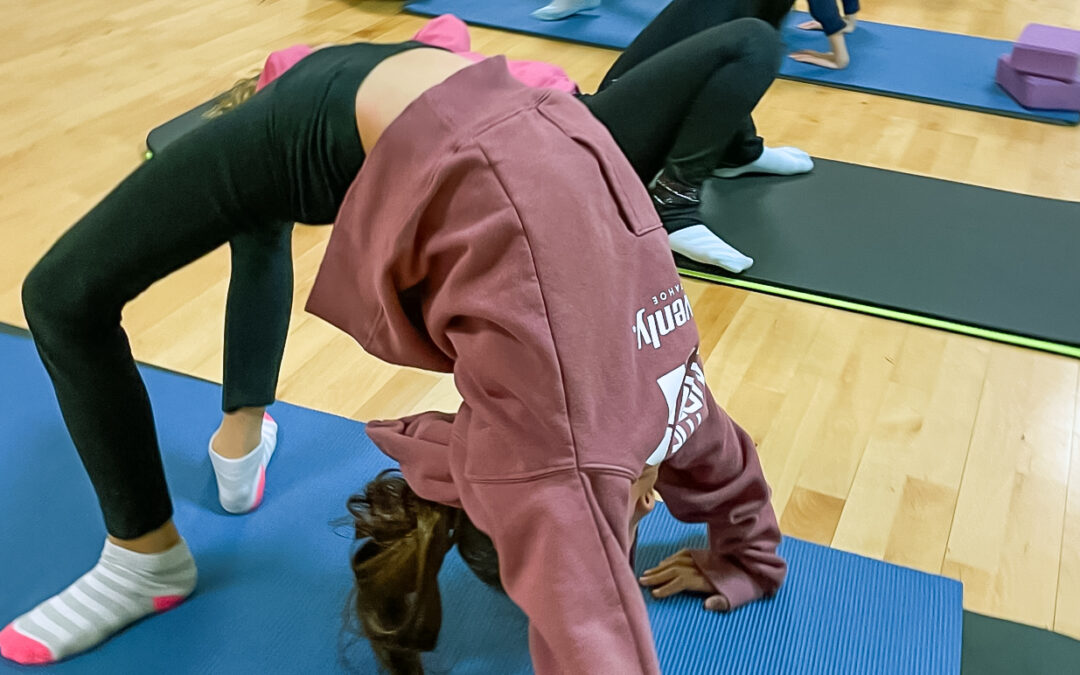Why is Flexibility Crucial for Young Children?
Young children are naturally brimming with energy. Their days are filled with running, jumping, and almost constant movement. But why is it essential to nurture this intrinsic vigor and encourage a lifelong habit of physical activity? Furthermore, why are flexibility and stretching of paramount importance to them?Engaging in regular stretching routines not only ensures physical fitness for children but also fosters habits that will benefit their overall health and well-being throughout their lives.
Direct Health Benefits:
-
Develops stronger muscles and bones.
-
Enhances flexibility in joints, rhythm balance, and overall coordination.
-
Boosts cardiorespiratory capacity, promoting greater endurance.
-
Assists in maintaining a lean physique by regulating body fat.
-
Reduces the likelihood of becoming overweight.
-
Minimizes the risk of type 2 diabetes onset.
-
Lowers both blood pressure and cholesterol levels.
-
Improves the quality of sleep.
Social-emotional benefits
-
Better outlook on life
-
Better handle physical and emotional challenges — from running to catch a bus to studying for a test.
-
Improved self-perception –perceive they can function competently when playing movement games.
Improved self-esteem and confidence
-
Gain practice and social skills interacting with peers they play motion games
-
Will take risks, and be more willing to challenge themselves
Cognitive and thinking skills
-
Improved listening skills, attention span, ability to focus and follow directions
The Importance of Stretching
Stretching exercises enhance flexibility, allowing muscles and joints to function effortlessly across their full range of motion. Everyday activities, such as reaching for a distant toy, practicing a split, or executing a cartwheel, provide kids with natural opportunities to stretch.
The benefits of maintaining flexibility are diverse:
-
Injury Prevention: Proper stretching reduces the risk of injuries.
-
Recovery: It aids in the body’s recuperation after physical exertion.
-
Preparation: Stretching primes the body for optimal performance, whether in a game or any physical activity.
-
Enhanced Blood Flow: It boosts circulation to the muscles.
-
Improved Motion: Stretching optimizes the range of motion in joints.
-
Temperature Regulation: It helps in regulating the body’s temperature, especially during physical activities.
-
Sustained Flexibility: Regular stretching ensures that children’s bodies remain supple, maximizing the benefits of other exercises.
-
Agility: A flexible body is more agile and can perform tasks more efficiently.
-
Reduced Muscle Tension: Stretching alleviates muscle tension, providing a refreshing sensation.
The Significance of Beginning Early
The American Council on Exercise underscores an often overlooked phenomenon: From the age of around 6, as children start to sit more frequently at desks, their hamstrings begin to adapt to this prolonged, shortened position. As these children transition into their teenage years, extended hours in front of screens exacerbate this muscle tightness, affecting not just the legs but also the back, neck, and shoulders. The Nationwide Children’s Hospital further emphasizes that during pre-teens and early adolescence, rapid growth spurts can cause muscles to tighten. This period witnesses a race between swiftly growing bones and muscles that lag behind, often resulting in compromised flexibility.
It’s imperative to instill the habit of stretching in children from a young age to safeguard their long-term well-being. Simple strategies could be integrating stretching into playful activities or weaving them into routine physical exercises.
According to the National Association for Sports and Physical Education, children who are more active physically exhibit heightened academic motivation and alertness. When we teach kids the value of exercise and flexibility early on, we’re not just promoting a momentary benefit. Instead, we’re bolstering their chances of embracing these practices throughout their lives. As their fitness levels soar, so does their overall enjoyment.
In essence, by introducing them to these habits, we equip them with lifelong tools to enhance their health and overall life quality. They’ll cherish a life replete with healthy habits, robust physical well-being, and the skills to thrive.
And let’s not forget: Fit kids have more FUN!


Recent Comments